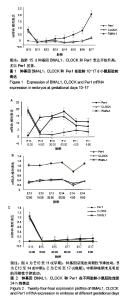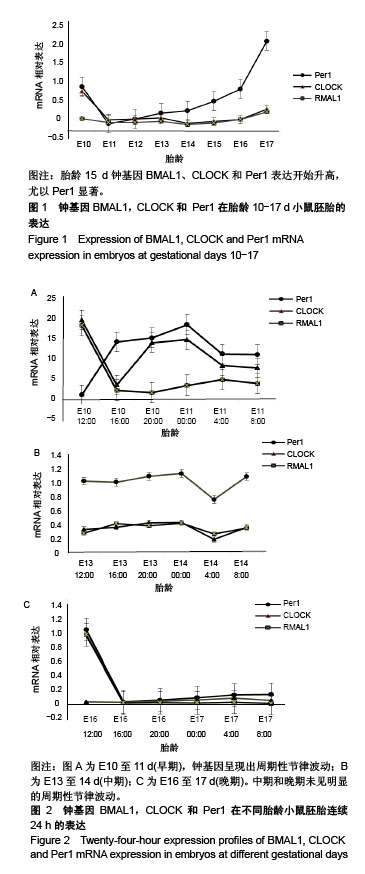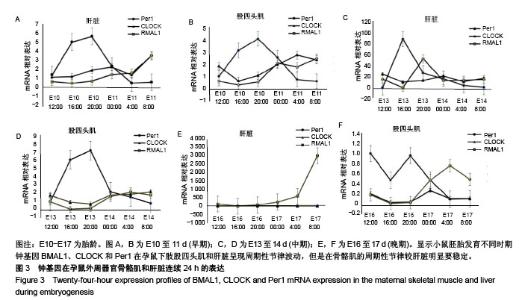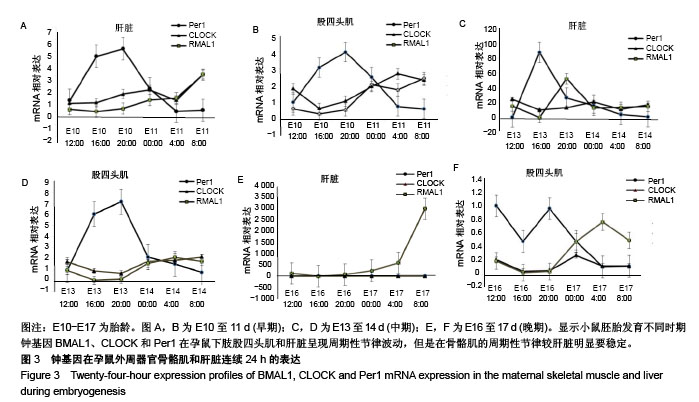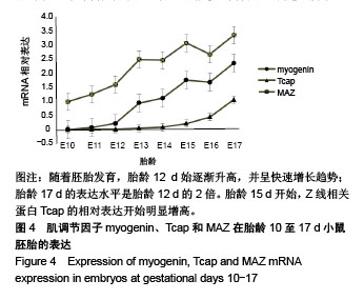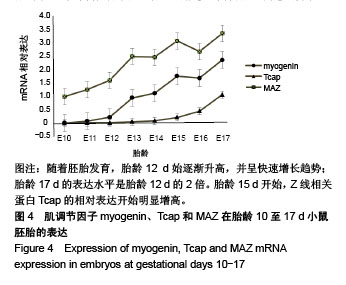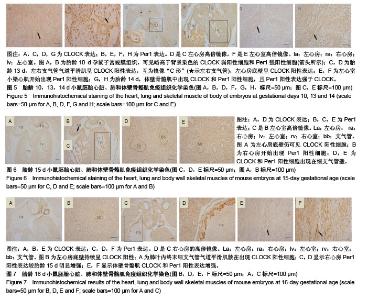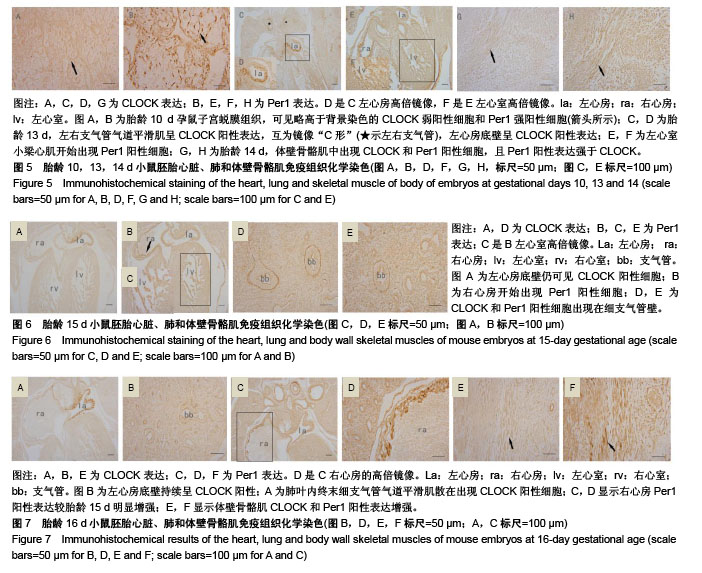| [1] Harfmann BD,Schroder EA,Esser KA.Circadian rhythms, the molecular clock, and skeletal muscle. J Biol Rhythms.2015;30(2): 84-94.[2] Musiek ES,Holtzman DM.Mechanisms linking circadian clocks, sleep, and neurodegeneration. Science. 2016;354(6315):1004-1008.[3] Masri S,Sassone-Corsi P.The circadian clock: A framework linking metabolism,epigenetics and neuronal function. Nat Rev Neurosci. 2013;14(1):69-75.[4] Bass J.Circadian topology of metabolism. Nature.2012; 491(7424): 348-356.[5] Takahashi JS.Transcriptional architecture of the mammalian circadian clock.Nat Rev Genet.2017;18(3):164-179.[6] Mayeuf-Louchart A,Stael SB,Duez H.Skeletal muscle functions around the clock. Diabetes Obes Metab.2015;17 Suppl 1:39-46.[7] 闫银弟,罗旭光,杨艳萍,等.骨骼肌昼夜节律分子钟机制的研究进展[J].实用医学杂志,2018,34(7): 1213-1215.[8] Umemura Y,Koike N,Ohashi M,et al.Involvement of posttranscriptional regulation of Clock in the emergence of circadian clock oscillation during mouse development. Proc Natl Acad Sci U S A.2017;114(36): E7479-E7488.[9] Jud C,Albrecht U.Circadian rhythms in murine pups develop in absence of a functional maternal circadian clock.J Biol Rhythms.2006; 21(2): 149-154.[10] Yagita K,Horie K,Koinuma S,et al.Development of the circadian oscillator during differentiation of mouse embryonic stem cells in vitro. Proc Natl Acad Sci U S A.2010;107(8): 3846-3851.[11] Kondratov RV,Kondratova AA,Gorbacheva VY,et al.Early aging and age related pathologies in mice deficient in BMAL1, the core componentof the circadian clock. Genes Dev. 2006;20(14): 1868-1873.[12] Schroder EA, Harfmann BD, Zhang X, et al.Intrinsic muscle clock is necessary for muscle of skeletal health.J Physiol. 2015;593(24): 5387-5404.[13] Robinson I,Reddy AB.Molecular mechanisms of the circadian clockwork in mammals.FEBS Lett.2014;588(15):2477-2483.[14] Martin AM,Elliott JA,Duffy P,et al.Circadian regulation of locomotor activity and skeletal muscle gene expression in the horse.J Appl Physiol(1985).2010;109(5):1328-1336.[15] Candasamy AJ,Haworth RS,Cuello F,et al.Phosphoregulation of the Titin-cap Protein Telethonin in Cardiac Myocytes.J Biol Chem.2014; 289(3):1282-1293.[16] Bos JM,Poley RN,Ny M,et al.Genotype-phenotype relationships involving hypertrophic cardiomyopathy- associated mutations in titin, muscle LIM protein, and telethonin. Mol Genet Metab.2006; 88(1): 78-85.[17] Podobed PS,Alibhai FJ,Chow C,et al.Circadian Regulation of Myocardial Sarcomeric Titin-cap(Tcap, Telethonin) Identification of Cardiac Clock-Controlled Genes Using Open Access Bioinformatics Data. PLoS One.2014;9(8):e104907.[18] Qiao M,Huang J,Wu H,et al.Molecular characterization, transcriptional regulation and association analysis with carcass traits of porcine TCAP gene.Gene. 2014;538(2):273-279.[19] Andrews JL,Zhang X,Mccarthy JJ,et al.CLOCK and BMAL1 regulateMyoD and are necessary for maintenance of skeletal muscle phenotype and function.Proc Natl Acad Sci U.S.A. 2010;107(44): 19090-19095.[20] Yoo SH,Yamazaki S,Lowrey PL,et al.PERIOD2∷LUCIFERASE real-time reporting of circadian dynamics reveals persistent circadian oscillations in mouse peripheral tissues.Proc Natl Acad Sci USA.2004; 101(15):5339-5346.[21] Song J,Murakami H,Tsutsui H,et al.Structural organization and expression of the mouse gene for Pur-1, a highly conserved homolog of the human MAZ gene.Eur J Biochem. 1999;259(3):676-683.[22] Álvaro-Blanco J,Urso K,Chiodo Y,et al.MAZ induces MYB expression during the exit from quiescence via the E2F site in the MYB promoter.Nucleic Acids Res. 2017;45(17):9960-9975.[23] Haller M,Au J,O'Neill M,et al.16p11.2 transcription factor MAZ is a dosage-sensitive regulator of genitourinary development.Proc Natl Acad Sci USA. 2018;115(8):E1849-E1858. [24] Li W,Li M,Liao D,et al.Carboxyl-terminal truncated HBx contributes to invasion and metastasis via deregulating metastasis suppressors in hepatocellular carcinoma. Oncotarget.2016;7(34):55110-55127.[25] Himeda CL,Ranish JA,Hauschka SD.Quantitative proteomic identification of MAZ as a transcriptional regulator of muscle-specific genes in skeletal and cardiac myocytes.Mol Cell Biol. 2008;28(20): 6521-6535.[26] Aoyama S,Shibata S.The Role of Circadian Rhythms in Muscular and Osseous Physiology and Their Regulation by Nutrition and Exercise. Front Neurosci.2017;11:63. |
